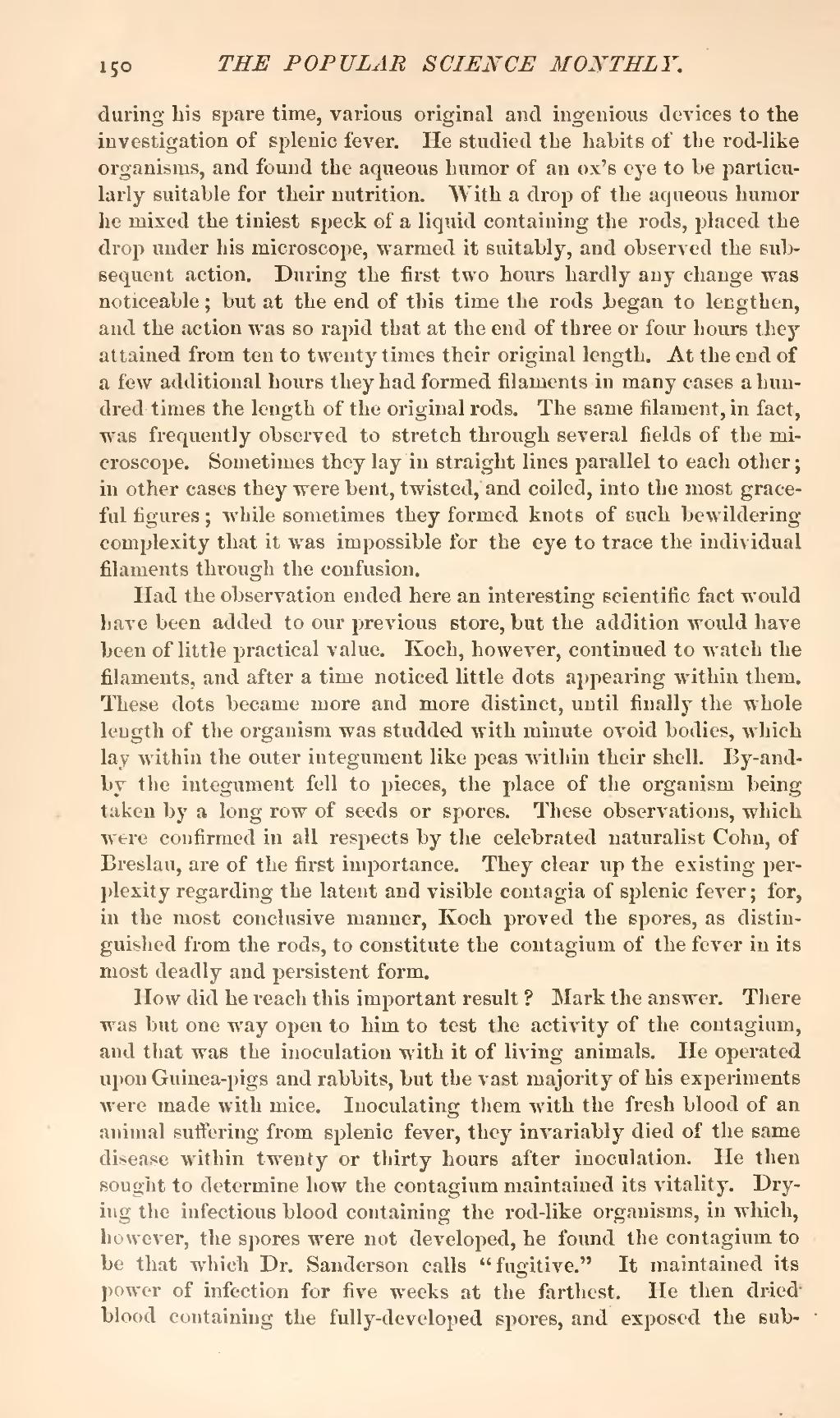during his spare time, various original and ingenious devices to the investigation of splenic fever. He studied the habits of the rod-like organisms, and found the aqueous humor of an ox's eye to be particularly suitable for their nutrition. With a drop of the aqueous humor he mixed the tiniest speck of a liquid containing the rods, placed the drop under his microscope, warmed it suitably, and observed the subsequent action. During the first two hours hardly any change was noticeable; but at the end of this time the rods began to lengthen, and the action was so rapid that at the end of three or four hours they attained from ten to twenty times their original length. At the end of a few additional hours they had formed filaments in many cases a hundred times the length of the original rods. The same filament, in fact, was frequently observed to stretch through several fields of the microscope. Sometimes they lay in straight lines parallel to each other; in other cases they were bent, twisted, and coiled, into the most graceful figures; while sometimes they formed knots of such bewildering complexity that it was impossible for the eye to trace the individual filaments through the confusion.
Had the observation ended here an interesting scientific fact would have been added to our previous store, but the addition would have been of little practical value. Koch, however, continued to watch the filaments, and after a time noticed little dots appearing within them. These dots became more and more distinct, until finally the whole length of the organism was studded with minute ovoid bodies, which lay within the outer integument like peas within their shell. By-and-by the integument fell to pieces, the place of the organism being taken by a long row of seeds or spores. These observations, which were confirmed in all respects by the celebrated naturalist Cohn, of Breslau, are of the first importance. They clear up the existing perplexity regarding the latent and visible contagia of splenic fever; for, in the most conclusive manner, Koch proved the spores, as distinguished from the rods, to constitute the contagium of the fever in its most deadly and persistent form.
How did he reach this important result? Mark the answer. There was but one way open to him to test the activity of the contagium, and that was the inoculation with it of living animals. He operated upon Guinea-pigs and rabbits, but the vast majority of his experiments were made with mice. Inoculating them with the fresh blood of an animal suffering from splenic fever, they invariably died of the same disease within twenty or thirty hours after inoculation. He then sought to determine how the contagium maintained its vitality. Drying the infectious blood containing the rod-like organisms, in which, however, the spores were not developed, he found the contagium to be that which Dr. Sanderson calls "fugitive." It maintained its power of infection for five weeks at the farthest. He then dried-blood containing the fully-developed spores, and exposed the sub-
